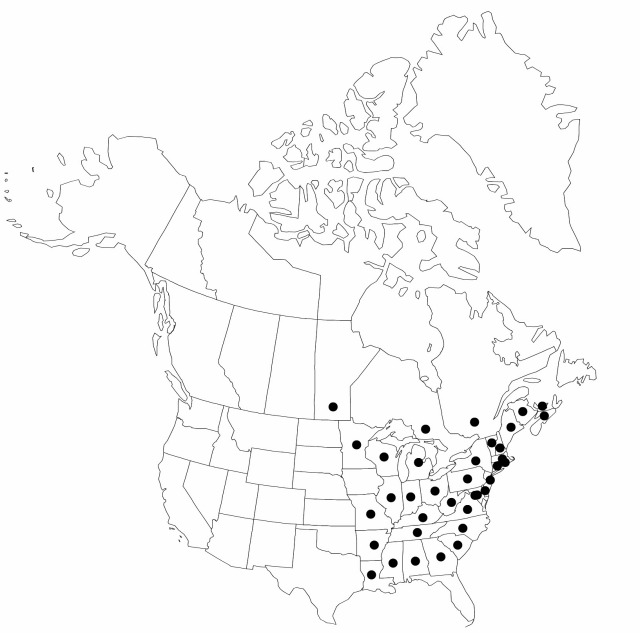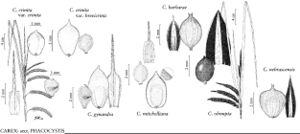Carex crinita var. crinita
Culms 40–135 cm, scabrous. Leaf blades 14–50 cm × 3.3–10.3 mm. Inflorescences: peduncle of pistillate spike 1.4–6.9 cm; proximal bract 3.7–10.9 mm wide; pistillate spikes 2–5; the proximal 3.5–11.5 cm × 4.2–6.8 mm. Pistillate scales (including awn) 3.4–11.2 mm. Perigynia divergent to ascending, ellipsoid to obovoid, 1.8–3.7 × 1.2–2.5 mm, apex rounded or obtuse; beak 0.1–0.3 mm. Achenes variously constricted. 2n = 66, 68.
Phenology: Fruiting Jun–Aug.
Habitat: Swamps, floodplain forests, wet meadows, marshes, bogs, stream edges, margins of lakes and ponds, roadside ditches
Elevation: 0–1500 m
Distribution

Man., N.B., N.S., Ont., P.E.I., Que., Ala., Ark., Conn., Del., D.C., Ga., Ill., Ind., Ky., La., Maine, Md., Mass., Mich., Minn., Miss., Mo., N.H., N.J., N.Y., N.C., Ohio, Pa., R.I., S.C., Tenn., Vt., Va., W.Va., Wis.
Discussion
Carex crinita var. crinita is sympatric and often syntopic with C. gynandra over a significant portion of its distribution; hybridization between the two taxa has been observed. Carex crinita var. paleacea (Wahlenberg) Dewey is a misapplication of the epithet to long-awned extremes of C. crinita var. crinita.
Selected References
None.
